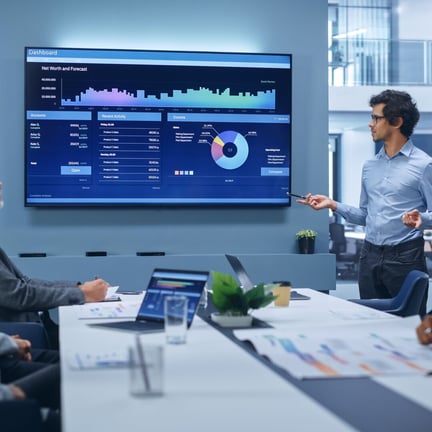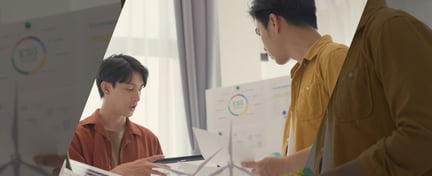In an increasingly digital world, the way training is delivered is evolving at pace. Virtual classrooms, AI-powered learning platforms and interactive digital tools have transformed access to professional development.
Amid this technological innovation, one truth remains unchanged: human connection is essential to effective learning. We spoke to Russell Brown, one of LRQA’s Senior Trainers, about how maintaining a personal connection with learners remains the foundation of real training impact, even as technology reshapes the way training is delivered.
"Technology can support learning brilliantly, but it can’t replace the value of a human being who’s been there, who understands the challenges and can connect learning to real experience," says Russell.
Why human connection is essential for effective learning
Learning is not just about absorbing information - it's about making meaning, solving problems and changing behaviours. According to LinkedIn’s Learning Workplace Report, 91% of learners say working directly with an instructor increases their success in learning. Russell sees this firsthand. "When you can talk to a trainer who’s worked across industries, who listens to your questions and gives real-world examples, it’s a completely different experience from just clicking through a module."
In live training, whether face-to-face or virtual, learners have the opportunity to ask questions, challenge ideas and relate new knowledge directly to their roles. This dialogue deepens understanding and drives true behavioural change.
The role of technology
There’s no doubt that technology plays an important role in modern learning. Virtual delivery enables flexibility, accessibility and scalability. Tools like polls, breakout rooms and collaborative whiteboards enrich the digital classroom.
But as Russell points out, technology should enhance, not replace, human-led training. "Good tech makes it easier to connect with people, not harder. It’s about using the tools to support interaction, not letting them dominate the session."
At LRQA, we invest in technology that empowers trainers to create dynamic, engaging learning environments without losing the human touch.
Making connection visible with visual facilitation
One method Russell uses to strengthen connections in both physical and virtual classrooms is visual facilitation. Instead of relying heavily on static slides, he incorporates hand-drawn visuals, real-time mapping of discussions and interactive diagrams to guide learning. "Visual facilitation has transformed the way I train. It brings sessions to life, engages different learning styles and makes information more memorable," he explains.
Research published in The Journal of Visual Literacy supports this approach, showing that visual methods improve adult learner comprehension and recall by up to 65% compared to text-based approaches. By using visual facilitation, Russell is able to maintain high levels of learner interaction, even in fully online sessions. It turns passive observers into active participants.
Building resilience through human-led learning
As organisations face constant change, from evolving standards to shifting market conditions, the need for agile, resilient teams has never been greater. Training that combines technological efficiency with human insight and connection prepares learners not just to understand change - but to lead it.
"People learn from people," Russell concludes. "Especially when the world feels uncertain, human connection makes all the difference. That's what turns information into capability." At LRQA, we believe that even in a digital-first world, the human side of learning will always matter most. It’s how we help organisations not just adapt but thrive.









